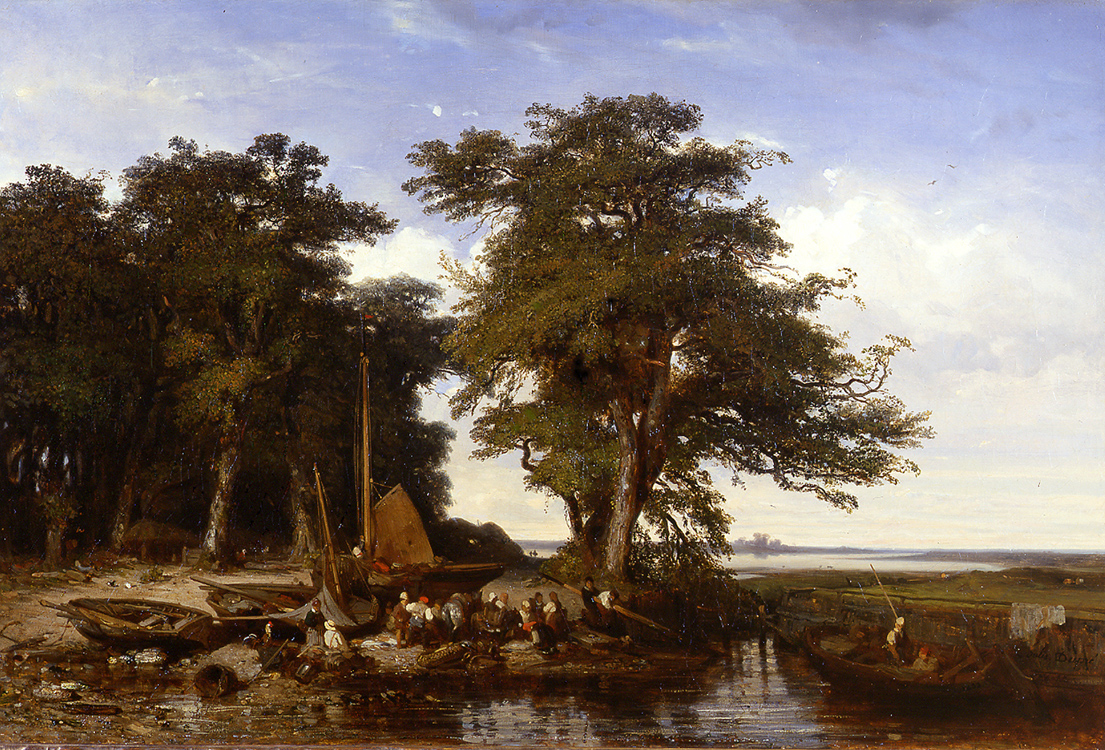|
Environs de Plymouth
JULES DUPRÉ
(1811 - 1889)
Environs de Plymouth
Oil on canvas
21 ½ x 32 inches
Signed and dated 1833
Jules Dupré was born in Nantes on April 5, 1811. His father was a porcelain manufacturer in Parmain – a small village on the shores of the Oise -- and by 1822 Jules was working in the factory decorating plates. In his spare time he painted simple landscape studies from nature and finally traveled to Paris to study with Jean-Michel Diebolt – the landscape and animal painter. In the late 1820’s his father was appointed director of the Coussac porcelain factory near Limoges and Jules took this opportunity to sketch and paint landscapes in this region.
In 1831, at the age of 20, he made his debut at the Salon – showing a number of landscapes and continued to exhibit there sporadically. That same year he was invited to London where he spent time studying the works of the English landscape artists and painting in the English countryside. It is believed that Dupré was responsible for bringing the English landscape style to France and blending it with the style and images of the Barbizon school.
In 1833 he exhibited a number of works at the Paris Salon and received a second-class medal. However, it was the works he exhibited at the Salon of 1835 that solidified his reputation in the hearts and minds of many of the artists of the Romantic school. In an article written for The Magazine of Art in 1890, Ernest Chesneau noted that:
His “View of the Fields near Southampton,” in 1835, had won him congratulations from all the golden youth of the Romantic school, and the friendship of Decamps, Jardin, Eugene Devéria, and Eugene Delacroix, who indeed, was never tired of seeing and studying this picture.
René Ménard wrote in the March 1873 issue of Gazette des Beaux-Arts that:
Jules Dupré became, almost from his début, one of the favorites in public opinion; his farms, his cottages, his old oaks on the boarders of pools with cows ruminating about, his plentiful pastures where horses run with flowing manes, his mills which profile their silhouettes on a stormy sky, have a simple and truthful side which captivates all the world. The precocity of his success only developed his activity; he is always at work, and gives himself up to incessant production, although he appears but rarely at our expositions … One may have more or less sympathy with the works of Rousseau or with those of Dupré, but these two masters will remain incontestably as the two grandest colorists in landscape which the contemporaneous school has produced.
It was also during this time that he met, and became friends with, Theodore Rousseau. There friendship would last through the 1840’s and the two not only traveled together throughout the French countryside in search of new subject matter, but also shared a studio where they worked, side by side.
Jules Claretie, a relative of Dupré, made the following comments about the artist and his relationship with Rousseau in The Magazine of Art: [even at the height of his career, he would carry] his young friend’s pictures from one to another, showing them off, praising them and making three several efforts to have one of Rousseau’s landscapes exhibited at the Salon. He even induced him to leave his attic room in the Rue Taitbout, and took a studio for him, where the two painters, working side by side, produced not a few pictures which will count to the credit of the modern French school.
In 1849 Dupré was awarded the Legion of Honor and by 1852 he stopped exhibiting at the Salon. At a special exhibition that took place in Paris in 1860, Dupré sent a number of works to be displayed. Théophile Gautier reviewed the exhibit and made these comments:
This exposition is to Jules Dupré a sort of dazzling début, although his fame is already old. For a long time, we know not why, this great artist has sent nothing to the Salon; and if he works, it is in the solitude and silence of the studio. The young generation, who did not see the splendid putting forth of art which followed the revolution of July, is astonished before the pictures of Jules Dupré, by this boldness, this zeal, and this brilliancy. We are no more accustomed to these superb extremes, to this excess of strength, to this overflowing power, to these full-faced struggles with nature. This excessive scale dazzles the eyes habituated to the sober regime of gray.
By the mid 1860’s he began to spend most of the summer months in the coastal town of Cayeux-sur-Mer – painting marine and shore line landscapes. In the late 1860’s Millet joined him during his summer sojourns and in the early 1870’s Courbet could also be found painting in this area.
It was not until 1867 when Dupré began to, once again, submit works to the Salon and it was at this exhibit where the artist was awarded a second-class medal.
Clarence Cook made the following remarks about the artist in his book Art and Artists of Our Time: Dupré … appeared as an innovator leading the public away from the epic grandeurs of nature to the quiet pastures, to the rich domain of farms and cattle-breeding meadows, to the calm depths of the forest, or the interiors of the farmer’s cottage. His pictures were rural poems, instilling quiet, happy thoughts, and from the first they won for him a warm place in the public heart. But he seemed quickly sated with applause, and since that time has exhibited little. “The truth is.” As one of his biographers says, “he is an artist who cares nothing for money or fame, and everything for art: he is able to follow his bent, and to do as he pleases, and he has his reward.” He has painted all aspects of nature and all the he has produced with a poetry that is the outcome of his own communing with nature, not borrowed from books nor inspired be the work of other men.
Dupré continued to spend much of his life in isolation and would exhibit at the Salon through 1883. He died on October 6, 1889. Today Jules Dupré is considered by many to be one of the most important and influential 19th century French landscape artists. |
|
|
INDEX - A VISUAL HISTORY
>
<
|
|
Virtual Exhibition Index
|
next
prev
|
 AIRY, ANNA (1882 - 1964)The Little Mirror AIRY, ANNA (1882 - 1964)The Little Mirror |
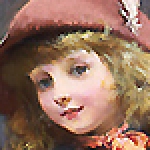 BARBER, CHARLES BURTON (1845 - 1894)Off to School BARBER, CHARLES BURTON (1845 - 1894)Off to School |
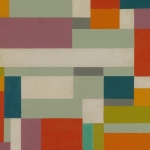 BOLOTOWSKY, ILYA (1907 - 1981)Abstract BOLOTOWSKY, ILYA (1907 - 1981)Abstract |
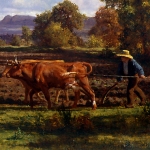 BONHEUR, AUGUSTE (1824 - 1884)Ploughing in the Nivernais BONHEUR, AUGUSTE (1824 - 1884)Ploughing in the Nivernais |
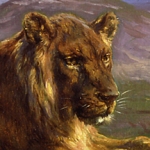 BONHEUR, ROSA (1822 - 1899)Couching Lion BONHEUR, ROSA (1822 - 1899)Couching Lion |
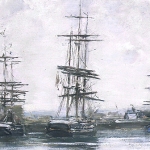 BOUDIN, EUGENE LOUIS (1824 - 1898)La bassin, Deauville BOUDIN, EUGENE LOUIS (1824 - 1898)La bassin, Deauville |
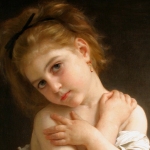 BOUGUEREAU, WILLIAM A. (1825 - 1905)La Frileuse BOUGUEREAU, WILLIAM A. (1825 - 1905)La Frileuse |
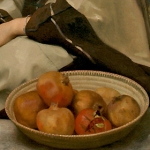 BOUGUEREAU, WILLIAM A. (1825 - 1905)Marchande de grenades (Pomegranate Seller) BOUGUEREAU, WILLIAM A. (1825 - 1905)Marchande de grenades (Pomegranate Seller) |
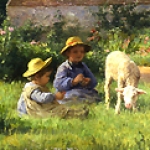 CHAIGNEAU, JEAN F. (1830 - 1906)Le Jardin de l'Artiste CHAIGNEAU, JEAN F. (1830 - 1906)Le Jardin de l'Artiste |
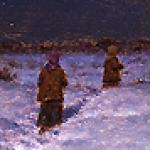 CHOULTSE, IVAN F. (b.1877)Nuit de Mars, Russie CHOULTSE, IVAN F. (b.1877)Nuit de Mars, Russie |
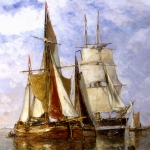 CLAYS, PAUL JEAN (1819 - 1900)Shipping on the Scheldt CLAYS, PAUL JEAN (1819 - 1900)Shipping on the Scheldt |
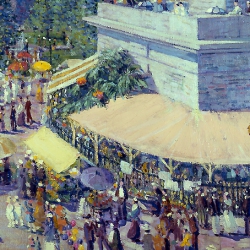 COALE, GRIFFITH BAILEY (1890 - 1950)The Baltimore Flower Mart - 1915 COALE, GRIFFITH BAILEY (1890 - 1950)The Baltimore Flower Mart - 1915 |
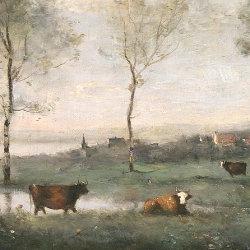 COROT, JEAN-BAPTISTE-CAMILLE (1796 - 1875)Pâturage dans les marais (Souvenir des environs d'Amiens) COROT, JEAN-BAPTISTE-CAMILLE (1796 - 1875)Pâturage dans les marais (Souvenir des environs d'Amiens) |
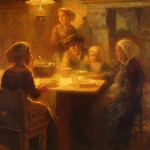 CORTÈS, EDOUARD LEON (1882 - 1969)The Breton Family CORTÈS, EDOUARD LEON (1882 - 1969)The Breton Family |
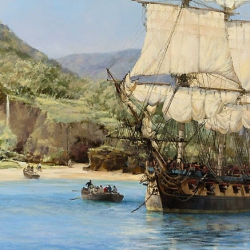 DAWSON, MONTAGUE (1895 - 1973)The Pirate's Cove, Wafer Bay, Cocos Island DAWSON, MONTAGUE (1895 - 1973)The Pirate's Cove, Wafer Bay, Cocos Island |
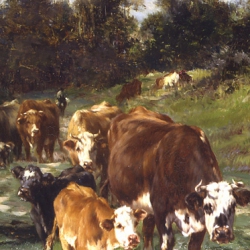 DIÉTERLE, MARIE (1856 - 1935)Troupeau dans un chemin creux DIÉTERLE, MARIE (1856 - 1935)Troupeau dans un chemin creux |
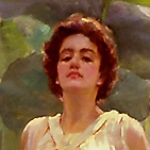 DRUMMOND, ARTHUR (1871 - 1951)Victorian Fantasy DRUMMOND, ARTHUR (1871 - 1951)Victorian Fantasy |
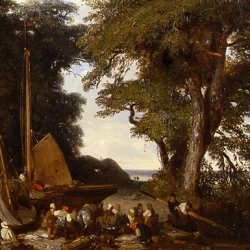 DUPRÉ, JULES (1811 - 1889)Environs de Plymouth DUPRÉ, JULES (1811 - 1889)Environs de Plymouth |
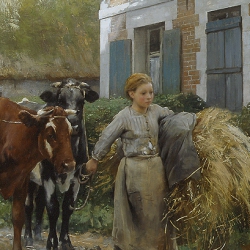 DUPRÉ, JULIEN (1851 - 1910)La rentrée au village DUPRÉ, JULIEN (1851 - 1910)La rentrée au village |
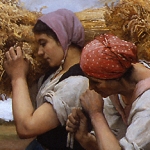 DUPRE, JULIEN (1851 - 1910)Glaneuses DUPRE, JULIEN (1851 - 1910)Glaneuses |
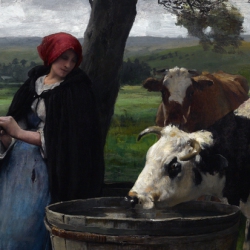 DUPRE, JULIEN (1851 - 1910)La Prairie DUPRE, JULIEN (1851 - 1910)La Prairie |
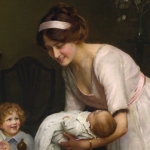 ELSLEY, ARTHUR J. (1860 - 1952)Good Night ELSLEY, ARTHUR J. (1860 - 1952)Good Night |
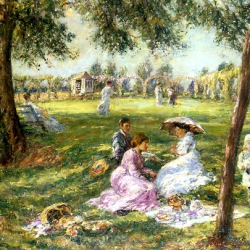 FISHER, R.A., WILLIAM MARK (1841-1923)In the Garden FISHER, R.A., WILLIAM MARK (1841-1923)In the Garden |
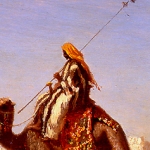 FRERE, CHARLES THEODORE (1814 - 1888)A Caravan Crossing the Desert FRERE, CHARLES THEODORE (1814 - 1888)A Caravan Crossing the Desert |
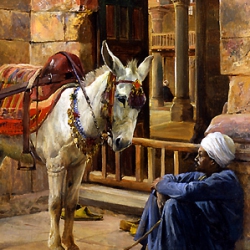 GIRARDET, EUGENE ALEXIS (1853 - 1907)Outside the Mosque GIRARDET, EUGENE ALEXIS (1853 - 1907)Outside the Mosque |
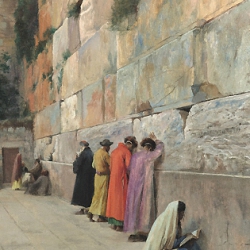 GIRARDET, EUGENE ALEXIS (1853 - 1907)The Wailing Wall GIRARDET, EUGENE ALEXIS (1853 - 1907)The Wailing Wall |
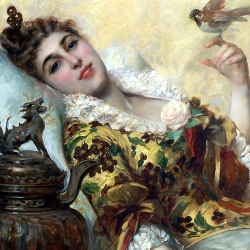 HERBO, LEON (1850 - 1907)La Charmeuse HERBO, LEON (1850 - 1907)La Charmeuse |
 ISRAELS, ISAAC (1865 - 1934)Dancing at the Moulin de la Galette ISRAELS, ISAAC (1865 - 1934)Dancing at the Moulin de la Galette |
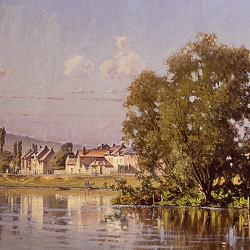 JOUBERT, LEON (fl.1883 - 1900)Un Coin de Seine a Lavacourt JOUBERT, LEON (fl.1883 - 1900)Un Coin de Seine a Lavacourt |
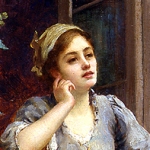 KNIGHT, DANIEL RIDGWAY (1839 - 1924)A Pensive Moment KNIGHT, DANIEL RIDGWAY (1839 - 1924)A Pensive Moment |
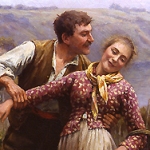 KNIGHT, DANIEL RIDGWAY (1839 - 1924)En Vendanges KNIGHT, DANIEL RIDGWAY (1839 - 1924)En Vendanges |
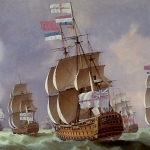 LUNY, THOMAS (1759 - 1837)Engagement Between Sir George Brydges Rodney and the Spanish Squadron, Commanded by Don Juan de Langara, Near Cape St. Vincent, January 16, 1780 LUNY, THOMAS (1759 - 1837)Engagement Between Sir George Brydges Rodney and the Spanish Squadron, Commanded by Don Juan de Langara, Near Cape St. Vincent, January 16, 1780 |
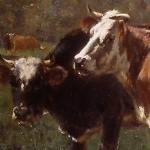 MARCKE DE LUMMEN, EMILE VAN (1827 - 1890)Vaches a Pâture MARCKE DE LUMMEN, EMILE VAN (1827 - 1890)Vaches a Pâture |
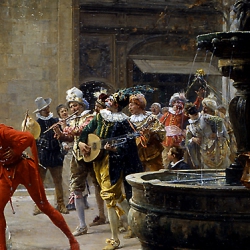 MOREAU, ADRIEN (1843-1906)Une Mascarade au XVII Siecle MOREAU, ADRIEN (1843-1906)Une Mascarade au XVII Siecle |
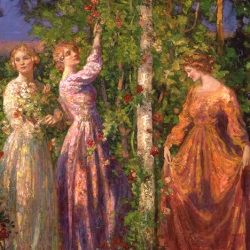 MOSTYN, TOM (1864 - 1930)Gather Ye Rosebuds While Ye May MOSTYN, TOM (1864 - 1930)Gather Ye Rosebuds While Ye May |
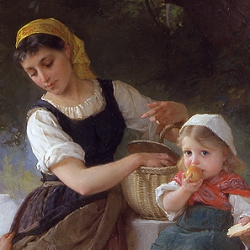 MUNIER, EMILE (1840 - 1895)May I Have One Too MUNIER, EMILE (1840 - 1895)May I Have One Too |
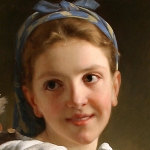 MUNIER, EMILE (1840 - 1895)La retour du marché MUNIER, EMILE (1840 - 1895)La retour du marché |
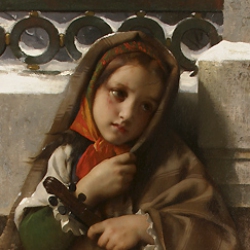 PERRAULT, LEON J.B. (1832 - 1908)Away From Home PERRAULT, LEON J.B. (1832 - 1908)Away From Home |
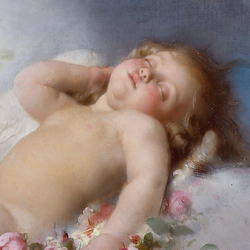 PERRAULT, LEON J.B. (1832 - 1908)Sleeping Putto PERRAULT, LEON J.B. (1832 - 1908)Sleeping Putto |
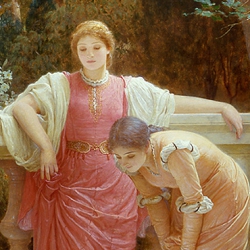 PERUGINI
, CHARLES EDWARD (1839-1918)The Green Lizard PERUGINI
, CHARLES EDWARD (1839-1918)The Green Lizard |
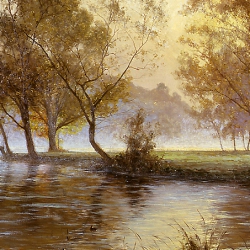 RIGOLOT, ALBERT GABRIEL (1862 - 1932)Soleil Levant dans la Brume RIGOLOT, ALBERT GABRIEL (1862 - 1932)Soleil Levant dans la Brume |
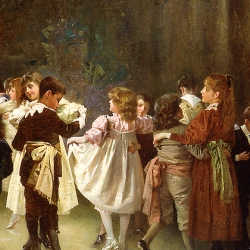 ROSSI, ALEXANDER MARK (FL.1870 - 1903)
May I Have This Dance? ROSSI, ALEXANDER MARK (FL.1870 - 1903)
May I Have This Dance? |
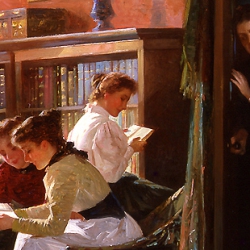 ROSSI, ALEXANDER MARK (FL.1870 - 1903)Forbidden Books ROSSI, ALEXANDER MARK (FL.1870 - 1903)Forbidden Books |
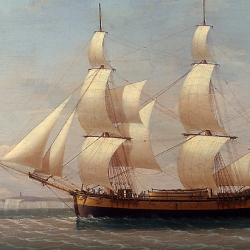 SALMON, ROBERT (1775 - c.1845)
The Estridge off Dover SALMON, ROBERT (1775 - c.1845)
The Estridge off Dover |
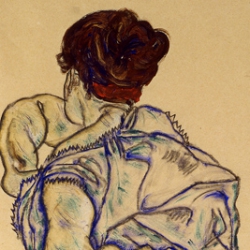 SCHIELE, EGON (1890 - 1918)Semi-nude with Green Stockings from the Back SCHIELE, EGON (1890 - 1918)Semi-nude with Green Stockings from the Back |
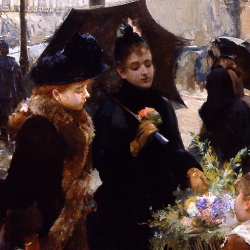 SCHRYVER, LOUIS MARIE DE (1862 - 1942)Après l’averse; - place du Théâtre-Français SCHRYVER, LOUIS MARIE DE (1862 - 1942)Après l’averse; - place du Théâtre-Français |
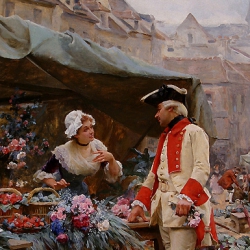 SCHRYVER, LOUIS MARIE DE (1862 - 1942)A Young Man's Fancy SCHRYVER, LOUIS MARIE DE (1862 - 1942)A Young Man's Fancy |
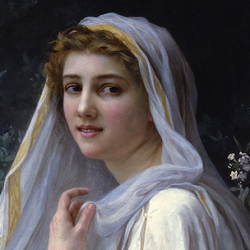 SEIGNAC, GUILLAUME (1870 - 1924)Reflections SEIGNAC, GUILLAUME (1870 - 1924)Reflections |
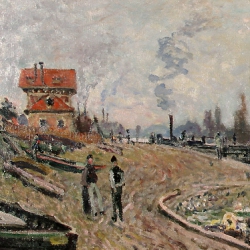 SISLEY, ALFRED (1839 - 1899)La Seine à Suresnes SISLEY, ALFRED (1839 - 1899)La Seine à Suresnes |
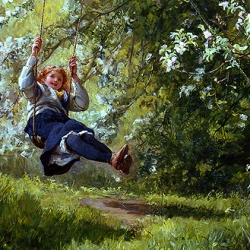 TOPHAM, FRANCIS W.W. (1838 - 1924)Young Girl on a Swing TOPHAM, FRANCIS W.W. (1838 - 1924)Young Girl on a Swing |
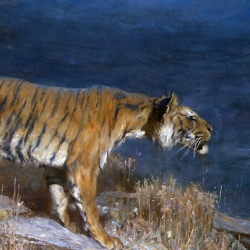 WARDLE, ARTHUR (1864 – 1949)The Deer-Stealer WARDLE, ARTHUR (1864 – 1949)The Deer-Stealer |
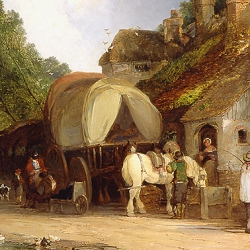 WILLIAMS, EDWARD CHARLES (1807 - 1881)The Old Roadside Inn WILLIAMS, EDWARD CHARLES (1807 - 1881)The Old Roadside Inn |
|
|
